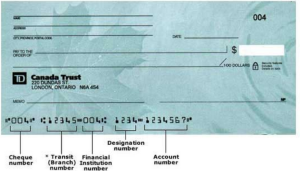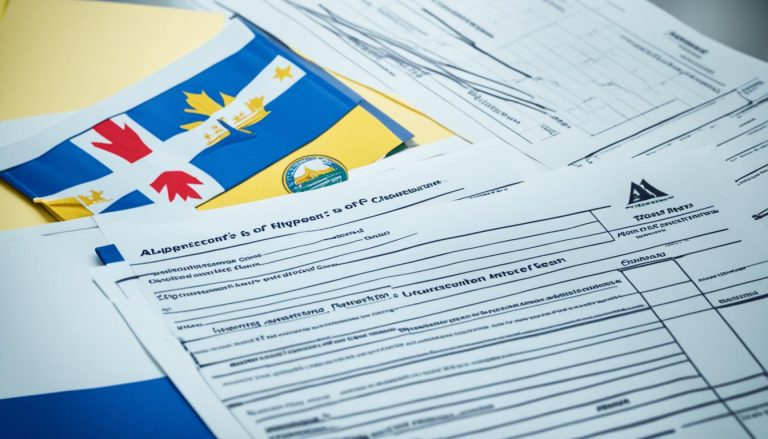In Canada, a transit number is a vital part of the banking process. It helps identify specific bank branches, ensuring that financial transactions are routed correctly.
From setting up direct deposits to making international transfers, the use of a transit number is essential to the smooth functioning of the Canadian banking system.
With continuous changes in the financial landscape, particularly with the rise of digital banking and online payment platforms, it’s important to understand the role of transit numbers and how they have evolved for 2024/25 and beyond.
In this article, we will cover a transit number, its purpose, how it works in Canadian banking, and why you should pay attention to this essential detail when handling your finances.
What Is a Transit Number in Canada?

A transit number in Canada is a five-digit code assigned to a specific bank branch. It is essential banking information needed for transactions such as direct deposits, wire transfers, bill payments, and other banking activities.
The transit number works with an institution number (a three-digit code that identifies the financial institution) and the account number to ensure that funds are directed to the correct account at the right branch.
As of 2024/25, Canadian banks and financial institutions continue to rely on transit numbers to manage their internal operations. However, online and digital banking integration has streamlined access to this information.
Banks like RBC, TD, and Scotiabank, alongside newer digital players, still assign transit numbers to branches, ensuring that traditional branch identification remains essential even as digital services grow.
What is the Purpose of a Transit Number?
The purpose of a transit number is to help identify the exact branch where a bank account is held. This ensures that all banking transactions are routed to the correct location without delays or errors. Whether you’re receiving a government payment or making a mortgage payment, the transit number guarantees that your funds reach their destination smoothly.
In 2024/25, with the increased use of automated systems, transit numbers remain crucial for setting up recurring payments, salary deposits, and tax refunds. Ensuring you use the correct transit number can help avoid unnecessary delays and failed transactions, particularly with the growth of cross-border payments and international transfers.
Format of a Canadian Transit Number
In Canada, the transit number follows a structured format consisting of five digits. When combined with the institution number, it creates a nine-digit routing number required for most banking transactions.
Here is an example of the typical format:
| Component | Description | Example |
|---|---|---|
| Transit Number | Identifies the branch | 12345 |
| Institution Number | Identifies the bank | 001 |
| Routing Number | Combines both transit and institution numbers for transactions | 12345-001 |
Each digit of the transit number is significant, helping banks accurately process transactions within the Canadian banking system. For example, in 2024/25, as online and mobile banking become even more prevalent, this routing system remains fundamental for connecting your account to a specific branch.
How to Find Your Transit Number?

Image – Source
Finding your transit number can be easy if you know where to look. With technological advancements, most banks provide quick access to your transit number both online and offline.
Here’s how you can locate it:
- Cheques: The most traditional way to find your transit number is at the bottom of a cheque, typically the first five digits in the string of numbers.
- Online Banking: Most Canadian banks provide account details, including the transit number, on their online banking platforms under account information.
- Mobile Banking Apps: In 2024/25, many banks have updated their mobile apps, making finding your transit number under account details simple.
- Bank Statement: Whether paper-based or digital, your bank statement often includes your branch’s transit number.
- Bank Support: If you’re having trouble, customer support or visiting a local branch can also provide this information.
Routing Number vs. Transit Number
Many people confuse routing numbers with transit numbers. While they are closely related, they serve different purposes:
- Transit Number: A five-digit code that identifies your specific bank branch.
- Routing Number: A nine-digit code that includes both the transit number and the institution number (e.g., 12345-001). It is used for transactions such as direct deposits and wire transfers.
The routing number combines both the transit and institution numbers, providing a complete identifier for transactions, particularly when dealing with automatic payments or international transfers.
Here’s a table highlighting the difference:
| Aspect | Transit Number | Routing Number |
|---|---|---|
| Length | 5 digits | 9 digits |
| Purpose | Identifies a specific branch | Used for all transactions, combines transit and institution number |
| Usage | Domestic transactions | Domestic and international transactions |
Transit Numbers and Their Role in Different Banking Transactions
Transit numbers are vital for several types of banking transactions, particularly in 2024/,25, with the growing reliance on digital payment methods. Here are some of the key areas where transit numbers are used:
- Direct Deposits: Employers use transit numbers to deposit salaries directly into employees’ bank accounts.
- Bill Payments: Utility companies and other service providers rely on transit numbers for processing payments.
- Wire Transfers: For both domestic and international transfers, transit numbers are critical to routing the funds to the correct bank branch.
- Setting Up New Accounts: When establishing a new bank account or setting up financial services, the transit number is used to ensure all transactions are directed properly.
Without a transit number, these transactions would face significant delays or might not be completed, causing unnecessary financial complications.
Transit Numbers for Major Canadian Banks

Each major Canadian bank uses transit numbers to identify specific branches across the country. While many of the larger financial institutions have hundreds of branches, each branch maintains its own transit number.
Here’s a breakdown of transit number usage among some of Canada’s major financial institutions in 2024/25:
| Bank | Institution Number | Example Transit Number | Purpose |
|---|---|---|---|
| TD Bank | 004 | 004 12345 | Direct deposits, EFTs, wire transfers |
| RBC | 003 | 003 67890 | Branch-specific routing for all domestic transactions |
| Scotiabank | 002 | 002 54321 | Bill payments, direct deposits, cheque processing |
| BMO | 001 | 001 98765 | Routing for account management and fund transfers |
| CIBC | 010 | 010 23456 | Payment routing, branch-specific transactions |
These examples show how Canadian banks differentiate between their branches for smooth transaction processing. It’s essential to ensure you use the correct transit number to avoid issues with transfers or payments.
Common Issues and Solutions Related to Transit Numbers
While transit numbers are designed to simplify banking transactions, a few common issues can arise:
- Incorrect Transit Number: Entering the wrong transit number could lead to delays or failed payments. Always double-check this number when setting up payments or transfers.
- Branch Relocation: If your branch relocates or merges with another, your transit number may change. Keep an eye on communication from your bank regarding any such changes.
- Difficulty Finding the Number: If you can’t find your transit number online or on your cheques, you can always call your bank or visit a local branch for assistance.
With modern banking, correcting errors or tracking back down the right transit is easier than every number.
Differences Between Transit Numbers, Institution Codes, and Account Numbers
To fully understand how Canadian bank codes work, it’s important to distinguish between the transit number, institution code, and account number especially given the increasing integration of digital banking.
Transit Number: This is a five-digit code that identifies a specific bank branch. It’s essential for routing funds to the correct location within the bank’s network and ensures that transactions such as deposits and payments are processed correctly.
Institution Code: Also known as the institution number, this is a three-digit code that identifies the bank itself, rather than the individual branches. This number is consistent across all branches of a bank, making it a crucial part of the routing number used for transactions.
Account Number: This number is unique to your specific account within the bank. It can range from 7 to 12 digits, depending on the bank. The account number is critical for ensuring that the money reaches the correct account within the specified branch.
These three elements work together to create a comprehensive routing system that directs transactions to the correct bank, branch, and account. In the context of digital banking in 2024/25, this system remains fundamental to connecting your transactions to your specific banking details, ensuring both speed and accuracy in processing payments, direct deposits, and other financial activities
Canadian Banking Transaction Routing Components
| Component | Description | Example |
|---|---|---|
| Transit Number | Identifies the specific branch | 12345 |
| Institution Number | Identifies the financial institution (consistent across all branches of the bank) | 001 for Bank of Montreal, 002 for Scotiabank, etc. |
| Account Number | Unique identifier for an individual account within the branch | Varies (7-12 digits depending on the bank) |
Conclusion
Understanding your transit number and its role in Canada’s banking system is essential for managing your financial affairs smoothly.
Whether setting up direct deposits, making payments, or transferring money internationally, having the correct transit number ensures that transactions are processed immediately.
As the financial sector continues to evolve in 2024/25, staying informed about essential banking codes like the transit number will help you avoid unnecessary disruptions in your banking experience.
FAQs About What is the Transit Number?
How do I find my branch’s transit number in 2024?
You can find your branch’s transit number on a cheque, through online or mobile banking, or by contacting your bank’s customer service.
Can a transit number change if my branch moves?
Yes, if your bank branch relocates or merges with another, the transit number may change. Banks will usually notify customers if any such changes occur.
Is a transit number the same as a routing number?
No, a transit number is part of the routing number. The routing number includes both the transit number and the institution number, used for processing payments and transfers.
Can I use a transit number for international transfers?
Yes, the transit number is used as part of the routing number, which is essential for international transfers, particularly alongside other identifiers like SWIFT codes.
What happens if I use the wrong transit number?
Using the wrong transit number can lead to failed transactions or funds being sent to the wrong branch. Always double-check the information before completing any financial transaction.
Do online banks use transit numbers?
Yes, even online banks operating in Canada still use transit numbers, although they may not have physical branches.
Are transit numbers confidential?
Transit numbers are not confidential but are required for transactions. While not as sensitive as account or PIN numbers, they should be handled with care to avoid transactional errors.
Disclaimer
EN Business Canada does not own the above images used in this blog; the copyrights of those blogs belong to the respective owners only.




